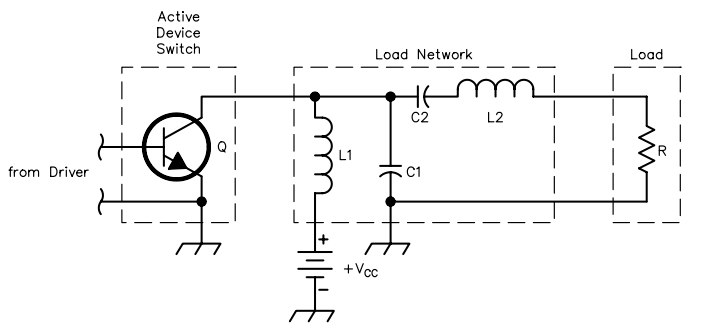
Schematic from Nathan Sokal's paper titled "Class-E RF power amplifiers", published in QEX Jan/Feb 2001.

For more info on designing Class-E amplifiers for LF/MF, see VK1SV's Class-E for beginners
L1min and Fr1/2 calculations are from here.
Many thanks to Daniel O'Connor (doconnor AT gsoft.com.au) for his contribution of the SI prefix capability, the L1min and Fr1/2 calculation as well as a general tidy up of the javascript code!
Back to calculators page or main page.